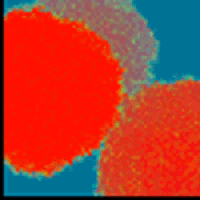 |
 |
 |
 |
 |
 |
 |
Section 1: The basics
There are 4 parts to section
1. We suggest you go through them in order.
The navigation bar below will allow you to move between these sections.

DISEASES
&
EPIDEMICS
Contents:
A:
A dictionary will tell you that in relation to disease, epidemics occur among a people or a community at certain times; that they are produced by factors not normally present in the affected locality; and that they may be limited to a small area.
Pandemics, on the other hand, are prevalent over the whole of a country or continent, or over the entire world.
Epidemics caused by diseases among animal populations are called epizootics. (Oxford English Dictionary)

Epidemics are outbreaks of infectious or contagious diseases that affect some members of a population living in particular places at specific times.
They are usually short-term, acute, often violent events that come and go.
They show striking and very distinctive patterns in time and space.
And they may be particularly destructive in terms of loss of life, but also their impact on the economy, the family, society and culture. There are even examples of states and governments collapsing after especially devastating epidemics.

The most familiar epidemic diseases are spread by direct contact between infected and uninfected (that is susceptible) persons.
| Some examples: Measles, smallpox, influenza, tuberculosis, polio, HIV/AIDS, and sexually transmitted infections (STIs) such as syphilis. |
But there is also an important second category of epidemic diseases which are transmitted to human beings by insect vectors.
| Some examples (and their carriers): Bubonic plague (flea), malaria (mosquito), typhus (body louse) and yellow fever (mosquito). |
A third group comprises those epidemic diseases which are communicated by water- or food-borne pathogens (bacteria, viruses or other micro-organisms).
| Some examples: Cholera, typhoid and dysentery. |

No, not all diseases are capable of generating epidemics.
The various forms of cancer and heart disease are influenced by genetic predisposition and life style (smoking, exercise, diet).
The important difference is that they cannot be communicated from person to person. These are the endemic diseases, ones regularly found in a population.

It is also worth bearing in mind that, like many other words ‘epidemic’ has come to have a loose, less technical meaning.
Today it is often used to refer to a sudden increase in virtually anything. Journalists and newspaper headline writers are especially fond of the word’s dramatic associations.
| Some examples: Epidemic of muggings hits London; Epidemic of obesity in Britain will reduce children’s life expectancy; Truancy reaches epidemic proportions. |



